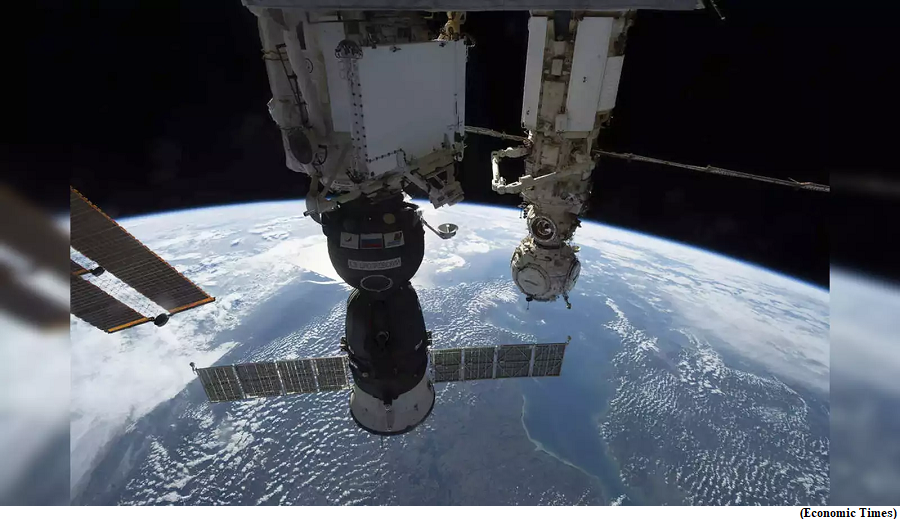India needs a space PLI (GS Paper 3, Science and Technology)

Context:
- The year 2023 has been a busy year for India’s space sector.
- The Indian Space Research Organisation’s (ISRO’s) successful mission to the moon has captured the imagination of the nation, let alone the sector.
Other dimensions:
- The nascent space start-up ecosystem in the country has also witnessed record private-investment flow.
- Add to this the technology transfer initiatives by ISRO, international agreements and co-operation including but not limited to the Artemis Accords, the official launch of iCET, India hosting the 4th edition of the Space Economy Leaders Meeting (SELM) under G20 presidency etc, and it will be an understatement to say that NewSpace era is finally here.
NewSpace:
- Popular consensus on the very definition of “NewSpace” is appropriate to private sector participation in core space activities. However, the last 8-10 months have shown that NewSpace has several layers and enablers over and above privatisation.
- In the Indian context, there are at least four critical enablers viz., regulatory and policy environment, private and public investments, international collaborations and technology transfers, actions of private and public enterprises that are being orchestrated for re-imagining India’s space sector with the aim of fostering socio-economic development and securing national interest.
Need for PLI scheme:
- While the recently released India Space Policy 2023 has provided clarity to non-government entities in the segment, a real shot in the arm would be the government following it up with the much-anticipated Space Activities Act and a FDI policy for the space sector.
- In addition to the GST exemption provided on satellite services, tax exemptions/tax holidays/accelerated depreciation for companies directly or indirectly engaged in space sector activities will make the industry more cost-competitive.
- As self-reliance has been one of the key objectives behind the reforms, it is important to ensure the journey towards this is focused on all segments of the value chain.
- To that extent, it may be time to consider a Production Linked Incentive scheme and other such incentives for boosting domestic manufacturing of critical components, particularly space electronics.
Private investments:
- Private investments in any sector will always be a product of market availability for offerings and return on investments.
- As most space-based services and applications are closely intertwined with on-ground governance delivery, even in the NewSpace era, governments will be major customers/consumers of the sector/services.
- A clear commitment and roadmap from major government entities on procurement and usage of space-based services and applications will not only ease investor concerns but also create new, innovative and efficient service delivery models in critical areas such as agriculture, natural resources management, disaster management, infrastructure, health, education etc.
Measuring space economy:
- Another significant action that will help substantially unlock value to the sector is a consensus on the methodology to define and measure the space economy.
- Several space-faring nations, such as the US and the UK, have annual exercises to measure and disclose the size of their space economy.
- This has enabled quick and hassle-free decisions by government, private, and international stakeholders.
Collaborations:
- Space as an industry is different from other sectors give the long gestation period for research, development and deployment, operational uncertainties, and risks, all of which also present the possibilities of much higher returns and newer value propositions.
- ISRO has been actively engaged in collaborations with academic institutions and research labs right from its inception, aimed at fostering the development of space technologies and facilitating ground-level research.
- The existing collaborations should also expand the scope of research to futuristic technologies. Such an expansion is essential for retaining valuable talent within the Indian space sector and enabling its sustained growth.
India’s private and public sector enterprises:
- The final call for action in on the most critical enabler: India’s private and public sector enterprises, which include both space and non-space legacy enterprises and start-ups.
India’s legacy space:
- India’s legacy space companies that have ISRO as the major customer are now marching into a new territory where newer customers are popping up.
- They have to augment their capacities to service increased demands and also hand-hold their ‘junior’ counterparts.
- The juniors have to take a leaf out of the seniors’ books and build robust business models to ensure value creation for the sector and returns to the funders, apart from innovating and developing technology capabilities.
India’s non-space ecosystem:
- India’s non-space ecosystem, which is already taking to cognisance the possibilities from space technologies to improve their core business operations, bear the onus of expediting adoption.
- Several sectors such as automobiles, logistics, mining, power and energy, infrastructure and real-estate, food and beverages, and banking and insurance can unlock productivity and optimise costs through intelligent use of space-based offerings.
- There are several such ready-to-market ‘Made in India’ solutions and offerings, and the onus is on India Inc to identify, consume and improve such offerings to help the country’s space economy.
Way Forward:
- Most, if not all of the above are certainly easier said than done. The sheer amount of technology development and adoption efforts, consensus, ecosystem orchestrations, risk appetite, decisions and action items required at several levels of governments and businesses is a herculean task.
- But so was soft-landing on the moon for a nation that got independence only 76 years back.


